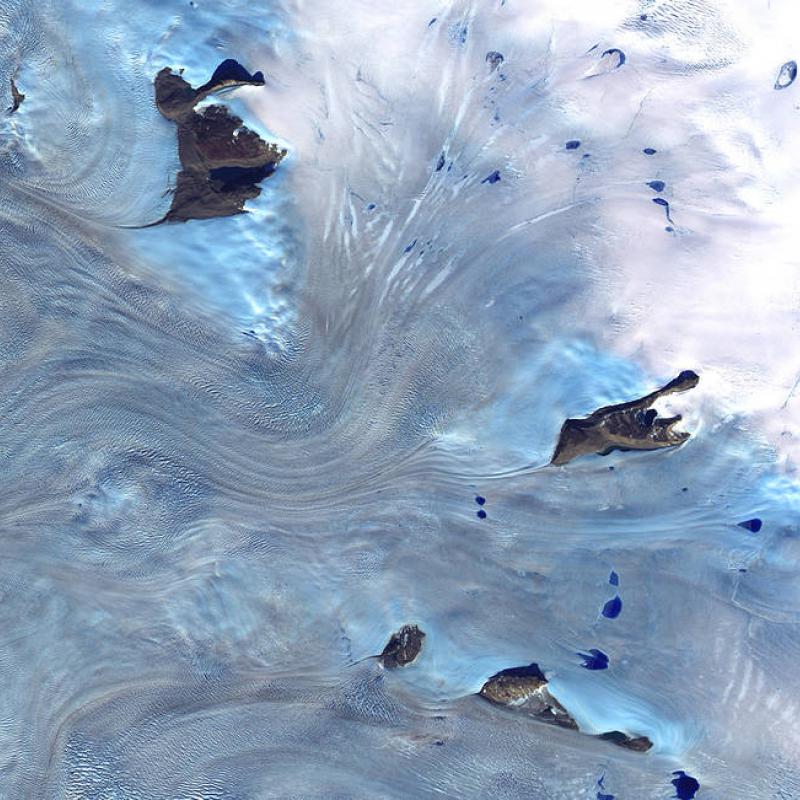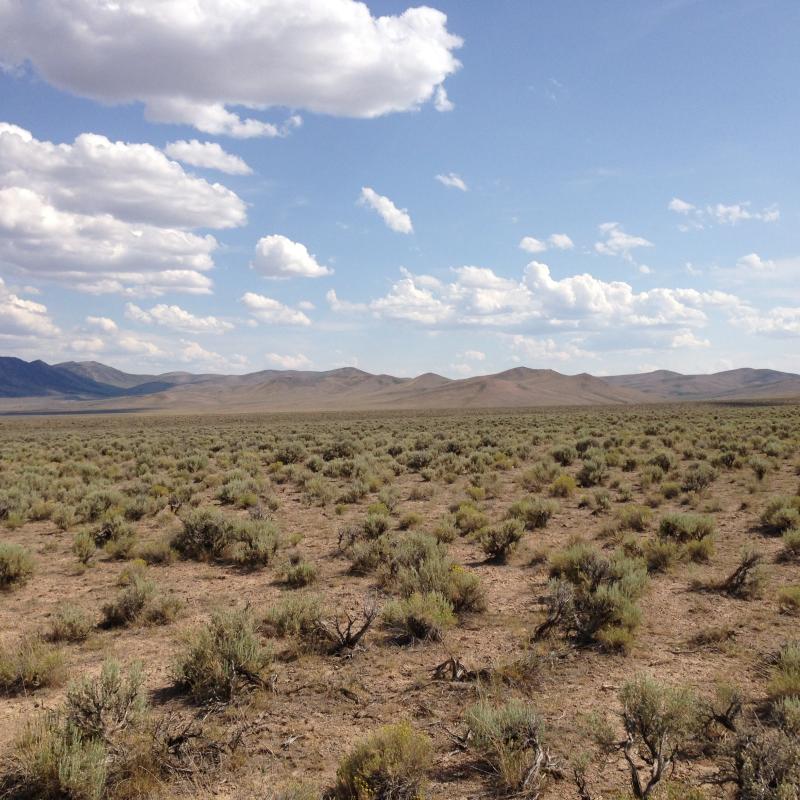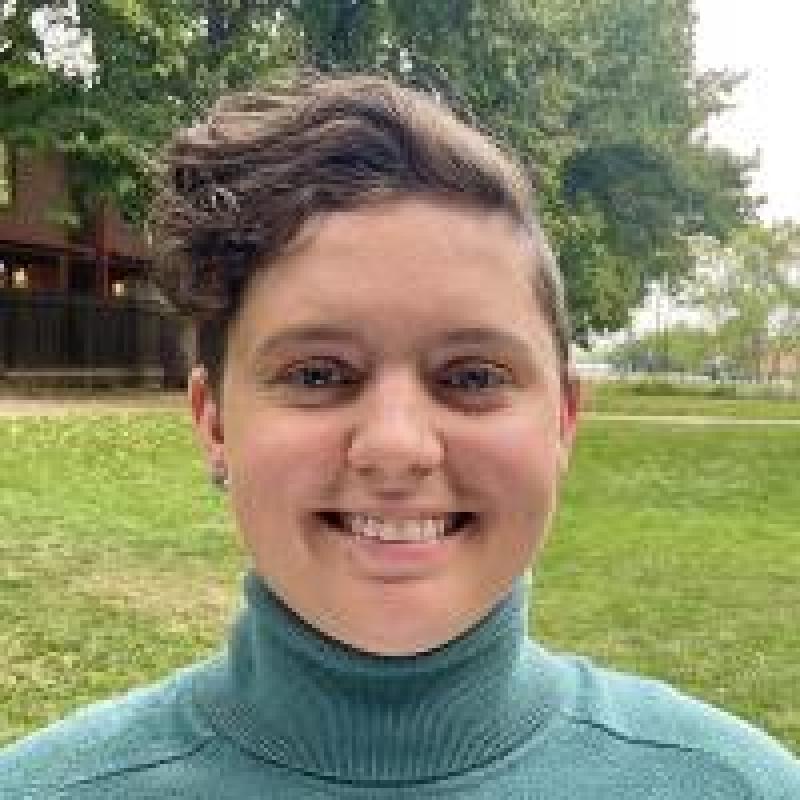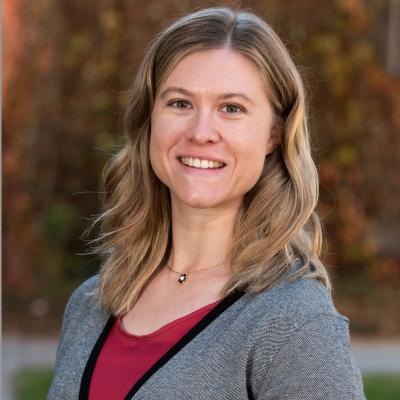Reflectance January 2022
Quick Updates, Sagebrush in Nevada, EDS Seminar Series
View this as a PDF here.

Landsat image of Baffin Bay taken in 2000
Quick Updates
- On 11/30 and 12/1, the leadership team met for a hybrid retreat to revisit Earth Lab objectives and plan for the upcoming year. The main findings were that: Earth Lab is doing well as far as funding, DEIA issues, and strategic initiatives, though we are always looking to improve; and we will support our members during the remote-hybrid transition by providing optional in-person activities. Reach out to chelsea.nagy@colorado.edu for more information.
- Many parts of our community were impacted in various ways by the Marshall Fire in December. Dozens of news outlets requested expert opinions in the wake of the tragedy, including those of Directors Jennifer Balch and Natasha Stavros. Read and listen to some of these stories and our experts' views on the fire on this page, "Earth Lab's Outreach and the Marshall Fire".

Sagebrush Steppe along U.S. Route 93 in central Elko County in Nevada
Soil, Climate, and Vegetation in an Endangered System: Sagebrush in Nevada
An alternate version of this piece, titled "Cold-Calling Can Lead to Impactful Research", is available on the Earth Lab website here.
The sagebrush biome is both the largest biome in the western United States and the most threatened by climate change. Sagebrush habitat is now slowly disappearing, with half of the original extent having been lost or degraded. One of the principal causes of this decline is annual grass invasion. A typical stand of sagebrush consists of deep-rooted shrubs, separated by bare ground that is covered in biological soil crust. Annual grasses connect the space between shrubs, which makes the whole system more fire-prone. After fire, the grasses tend to form dense monocultures before the sagebrush can establish. The new plant community represents a conversion from deep-rooted to shallow-rooted plants and is much more sensitive to changes in rainfall.
In order to understand how the invasion of sagebrush by cheatgrass interacts with soil (and how climate might affect both), we went to Nevada. There, we sampled plants and soil after a two year dry period and then again after a two year wet period, along a gradient of cheatgrass invasion. Half of the plots we sampled still had intact shrubs and deep-rooted grasses, and the other half were postfire cheatgrass monocultures.
Climate and soil nutrients are known to affect plant growth and we wanted to know how these relationships would differ in sagebrush compared to cheatgrass. At the sites that still had intact sagebrush and deep-rooted perennial plants, the perennial plants had a stabilizing effect on the soil nutrients. At the post-fire sites that were dominated by cheatgrass, both soil nutrients and vegetation cover were more sensitive to changes in moisture, with losses of soil carbon and nitrogen in wet years. We also found that cheatgrass monocultures had more homogeneous soil nutrients within sites. Taking these two results together, once sagebrush shrublands are converted to annual grass monocultures, we can expect the soil to become more nutrient poor and more homogeneous.
These are two findings that help us understand the relationships between climate, soil, and plants. They illustrate why sagebrush restoration has been so challenging, and highlight the importance of restoring deep-rooted plants as soon as possible after fire in this system to prevent degradation of soil health.
Full Paper: Interannual climate variability mediates changes in carbon and nitrogen pools caused by annual grass invasion in a semiarid shrubland (Global Change Biology)
Adam Mahood is a postdoctoral scholar and former grad student at Earth Lab focusing on broadscale fire ecology and remote sensing research.
Meet Earth Lab's New Education Trainer!
Elsa Culler

Where did you work before coming here and what did you do?
I was a graduate student working in a group studying mass movement and cascading natural hazards - also out of CIRES. My research focuses on hydrologic triggers of post-wildfire landslides.
What are you most looking forward to in your new position?
I'm excited to be mentoring student capstone projects. The Earth Analytics certificate students have awesome ideas, and the skills to be able to take on some challenging material.
What are some of your hobbies or interests?
So many things! Lately: creative nonfiction, digital art, classical piano, flying trapeze, and backcountry snowshoeing/skiing.
What is your favorite color?
Cobalt Blue

Rainforest near Daintree, Queensland, Australia
Earth Data Science Seminar Series
We are proud to announce the successful start of our EDS Seminar Series! Director Stavros and Education Trainer Elsa Culler kicked off our series in January with topics about spatial statistics and post-fire landslide susceptibility.
Join us on Tuesdays from 11:00 - 11:50 (MST) on Zoom. In-person participation coming soon! Visit earthlab.colorado.edu/seminar for more details.
Upcoming Events
2/1 - Forest Responses to Linked Disturbance in Australia - Anna Spiers, CU EBIO
2/8 - Changing human causes & impacts of Western wildfires in the 21st century - Phil Higuera, University of Montana
2/15 - Assisted Migration Analytics to Rescue Populations from Extinction - Ty Tuff, Earth Lab
2/22 - Tutorial: Structural Equation Modeling in R - Adam Mahood, Earth Lab



